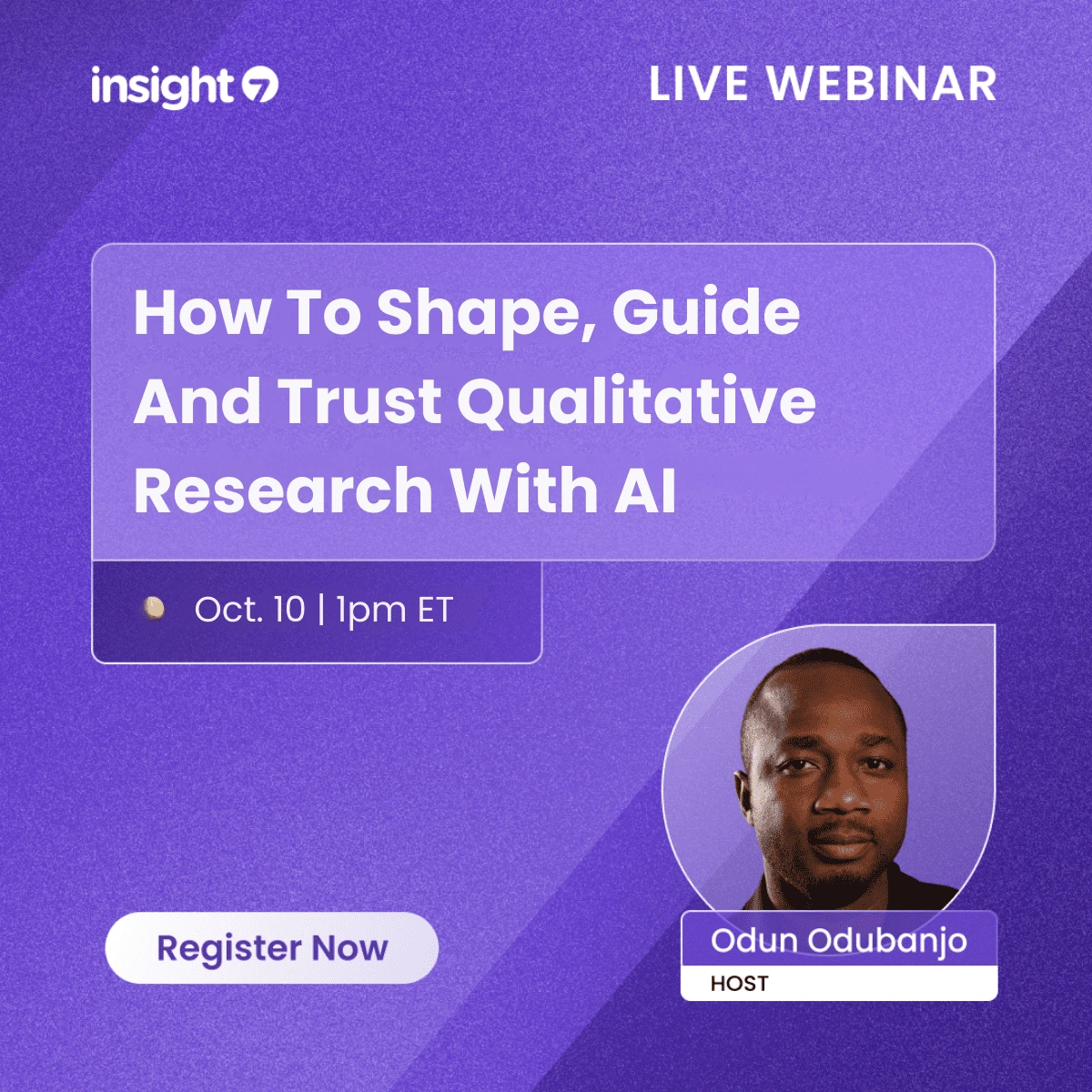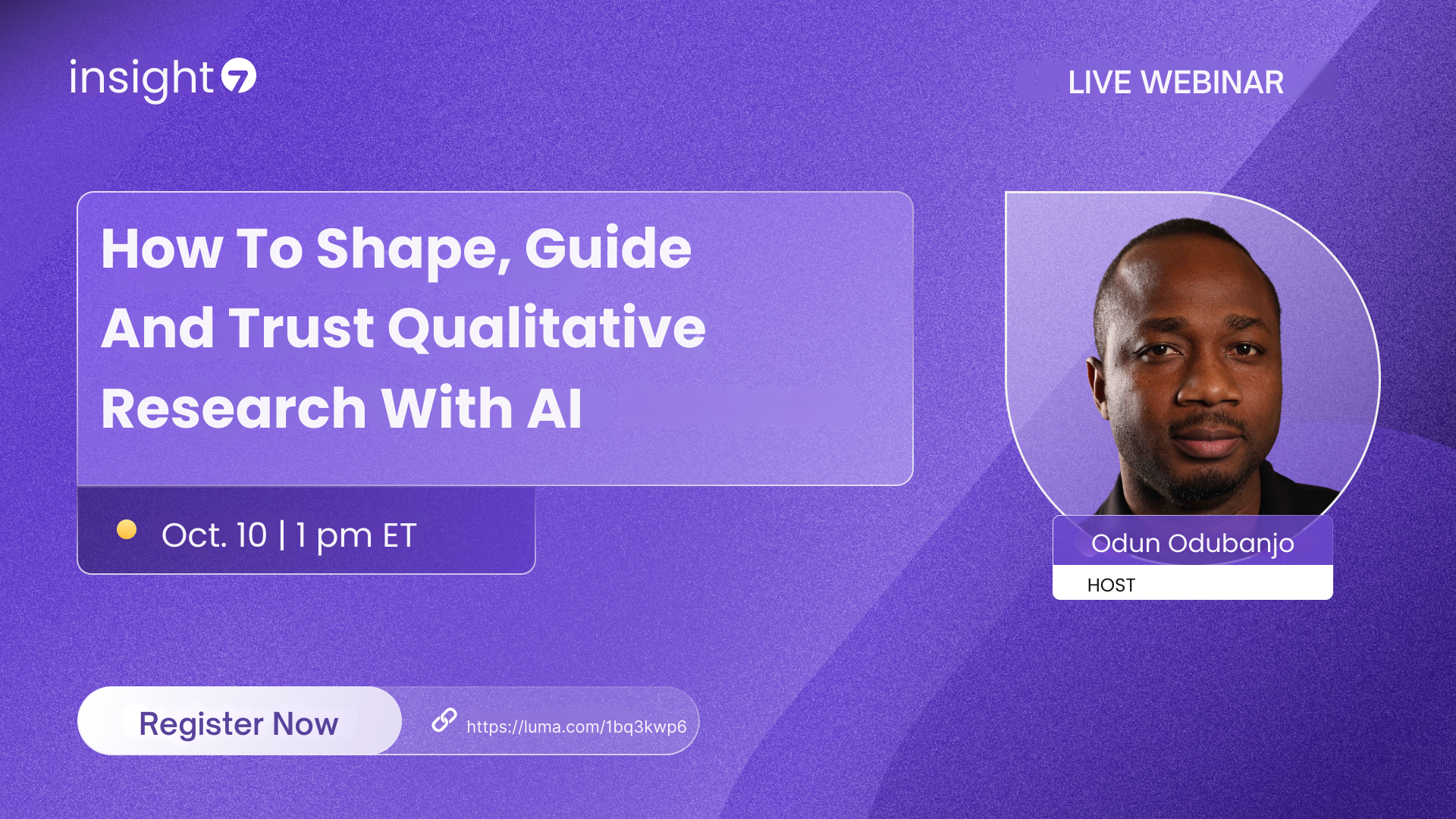Generative AI For Ux Research Best Tools In 2024
-
Bella Williams
- 10 min read
Generative AI UX Tools are set to revolutionize the way we conduct user experience research in 2024. As technology rapidly advances, these tools become increasingly accessible, enabling user researchers to gain deeper insights without requiring extensive technical expertise. By democratizing access to valuable data and insights, these tools empower teams from various backgrounds to engage in informed decision-making.
In this evolving landscape, it’s imperative to understand how Generative AI can enhance user research methodologies. From analyzing vast datasets to identifying key pain points and user desires, AI-driven insights can significantly improve UX design processes. The upcoming sections will outline the best generative AI tools for UX research, helping you navigate this exciting frontier and choose the right solutions for your needs.
Analyze & Evaluate Calls. At Scale.

Generative AI UX Tools have revolutionized the way researchers gather and analyze user data. As organizations strive for a deeper understanding of their users, these tools provide innovative solutions that streamline the research process. By automating repetitive tasks, facilitating data analysis, and generating actionable insights, these tools allow researchers to focus on strategic decision-making.
When selecting generative AI UX tools, users should consider several key factors. First, the tool's features and functionalities must align with specific research goals to ensure comprehensive data collection and analysis. Additionally, aspects such as ease of use, integration capabilities, and support resources play a vital role in enhancing overall research efficiency. Lastly, understanding the unique strengths of each tool can greatly influence the success of the user experience research, ultimately leading to better design outcomes and user satisfaction.
The Evolution of Generative AI UX Tools
The developments in Generative AI UX tools reflect a significant shift in how user experience research is conducted. Initial tools focused primarily on automated data collection but have since evolved to include advanced analytics and real-time insights. This evolution allows researchers to refine their methodologies and improve overall efficiency in interpreting user feedback. As these tools become more intuitive, they enable greater participation from team members with varying levels of expertise.
In 2024, the most effective Generative AI UX tools are not just about collecting data; they also empower users to visualize and analyze insights dynamically. The integration of natural language processing has transformed how feedback is categorized and prioritized, making it easier to discern pain points and user desires. Consequently, this evolution serves to democratize access to critical insights, ensuring that organizations can innovate their user experiences while remaining responsive to consumer needs.
How Generative AI Transforms UX Research
Generative AI has significantly transformed UX research by providing innovative tools that enhance user experience insights. By analyzing vast amounts of data, these generative AI UX tools uncover hidden patterns and trends that traditional methods might miss. This capability allows researchers to dive deeper into user behavior and preferences, enabling them to create tailored experiences that resonate with end-users.
Moreover, the automation of data collection and analysis accelerates the research process, which frees up valuable time for researchers to focus on strategic decision-making. The integration of AI-driven methodologies promotes more accurate, actionable insights that are essential for optimizing product design and user interaction. In 2024, the reliance on Generative AI UX tools is expected to grow, as they equip UX professionals with the resources to adapt quickly to changing user needs and behaviors, shaping the future of digital experiences.
The Rise of AI-Driven UX Tools
The evolution of Generative AI UX Tools marks a significant shift in the way user experiences are designed and improved. These tools leverage sophisticated algorithms to analyze vast amounts of data, identifying user preferences and pain points. This data-driven approach allows designers to create more personalized and intuitive interfaces, enhancing overall user satisfaction.
One of the defining features of AI-driven UX tools is their ability to automate repetitive tasks, freeing UX researchers to focus on strategy and creativity. For instance, these tools can analyze user feedback from interviews and surveys, extracting actionable insights that guide design decisions. By democratizing access to user insights, AI tools empower team members across the organization to participate in the UX research process. Ultimately, the rise of these technologies promises a future where UX research is faster, more insightful, and more effective than ever before.
Extract insights from interviews, calls, surveys and reviews for insights in minutes
Generative AI UX Tools for Research in 2024
Generative AI UX tools are reshaping the landscape of user experience research in 2024. These innovative technologies enable researchers to gain deeper insights through advanced data analysis and user feedback synthesis. By harnessing the power of AI, UX professionals can streamline their workflows, making research processes more efficient and data-driven.
One notable aspect of these tools is their ability to assist in creating detailed user personas. This helps in understanding target audiences on a granular level. Additionally, AI-driven analysis can unveil patterns and preferences that might go unnoticed through traditional methods. When selecting a generative AI UX tool, consider factors such as usability, integration capabilities, and the specific needs of your research. This approach ensures that organizations can effectively leverage these tools to elevate their UX research efforts and deliver better products.
Top Generative AI Tools for UX Research
In the realm of UX research, Generative AI UX tools are becoming essential for effectively analyzing user data. These tools enable researchers to process large volumes of customer insights rapidly, transforming qualitative discussions into actionable strategies. This transformation not only saves time but also enhances the accuracy of the insights derived from user feedback. By utilizing AI, teams can efficiently collaborate and integrate findings, ensuring that valuable insights do not remain scattered across various files.
Several standout tools are leading the charge in 2024. Insight7 provides a user-friendly platform that simplifies data analysis, making it easier for teams to draw meaningful conclusions from customer conversations. Other notable tools are designed to complement specific research tasks, such as sentiment analysis, usability testing, or survey analysis. Choosing the right Generative AI UX tools hinges on matching their capabilities with your unique research objectives, ensuring that you can make informed, impactful decisions for your product development.
Insight7
In the realm of user experience research, Insight7 is a significant player, introducing a self-service platform designed to analyze data at scale, particularly customer interviews. This tool speaks to the needs of companies that generate vast amounts of customer signals but struggle with traditional analysis methods. Insight7 simplifies and streamlines the process, making it easier for teams to extract actionable insights quickly.
The effectiveness of generative AI UX tools lies in their ability to turn complex data into clear, actionable strategies. The platform enhances collaboration by consolidating insights into a cohesive framework, ensuring that teams remain aligned and informed. Insight7 empowers organizations to ask better questions and obtain more meaningful answers, positioning them ahead of competitors who rely on outdated methodologies. By harnessing the power of innovative tools like Insight7, businesses can drive more impactful user experiences through informed decision-making.
Tool 2: [Specify Tool Name]
Tool 2: Insight7
Insight7 stands out as a powerful addition to the Generative AI UX Tools available in 2024. Designed specifically for UX research, this tool harnesses the power of AI to streamline data analysis and enhance user insights. Its ability to sift through vast amounts of qualitative and quantitative data makes it a valuable asset for UX researchers looking to derive actionable insights quickly.
One of Insight7's key features is its advanced data visualization capabilities. This allows researchers to present findings in a clear and compelling way, making discussions with stakeholders more effective. Additionally, it offers customizable templates that cater to varying client needs, adapting to specific project requirements without losing sight of crucial data. As organizations increasingly rely on data-driven decisions, tools like Insight7 are instrumental in bridging the gap between user feedback and design improvements. Embracing such Generative AI UX Tools will empower teams to navigate the complexities of user expectations in 2024 and beyond.
Tool 3: [Specify Tool Name]
Tool 3: Insight7
The third tool in our exploration of Generative AI UX Tools for 2024 is Insight7, a groundbreaking platform designed to enhance user research through intelligent data analysis. Insight7 uses advanced algorithms to extract deep insights from customer feedback, allowing researchers to identify patterns that might not be immediately apparent. By employing generative AI, it transforms raw data into actionable insights, helping teams make informed design decisions efficiently.
What sets Insight7 apart is its user-friendly interface and customization options. It caters to various industries, offering tailored solutions that align with specific research methodologies. Users can quickly set up surveys and collect data, which Insight7 analyzes in real time. This capability ensures that decision-makers have access to up-to-date feedback, making it an invaluable resource for any UX research initiative. With tools like Insight7, organizations can streamline their research processes and gain a competitive edge in understanding their users' needs.
Tool 4: [Specify Tool Name]
Tool 4: UserMind
UserMind stands out as a compelling choice among generative AI UX tools for 2024. This robust platform focuses on understanding user behavior through real-time feedback analysis. By leveraging advanced natural language processing capabilities, UserMind can identify user sentiments and trends, facilitating a deeper understanding of user needs.
The platform prioritizes customization, allowing teams to tailor feedback forms and surveys to specific audience segments. This adaptability ensures that insights gathered are relevant and actionable. Additionally, its intuitive interface provides comprehensive visualizations of data, making it easier for UX researchers to interpret findings and share results with stakeholders. In a rapidly evolving digital landscape, UserMind equips organizations with the tools necessary to enhance user experiences and drive product development. By integrating UserMind into your research workflow, you can align your design decisions more closely with user expectations and preferences, paving the way for effective UX solutions.
How to Select Generative AI UX Tools for Your Needs
When selecting Generative AI UX tools, clarity on your specific needs is paramount. Start by evaluating the unique features each tool offers, as these will dictate how effectively they align with your projects. Consider whether you require tools for data analysis, user feedback collection, or content generation. Each tool's capabilities can greatly affect your research outcomes, so do not overlook this critical step.
Next, align the tools' strengths with your UX research goals. Identify whether you want to drive deeper user insights, streamline your workflow, or enhance creativity in your designs. This matching process ensures that the Generative AI UX tools you choose will not only fit your requirements but also elevate your research efforts. By taking these steps, you can strategically engage with tools that truly advance your UX research objectives in 2024 and beyond.
Assessing Tool Features and Capabilities
Assessing tool features and capabilities is crucial in the selection process for Generative AI UX Tools. Understanding the specific functionalities offered by these tools can significantly enhance research outcomes. Start by considering what you want to achieve. Are you looking for tools that provide in-depth analysis, or do you prefer those that facilitate real-time feedback and reports? Identifying your goals will help narrow down your options.
When evaluating capabilities, examine the usability of each tool. Look for interfaces that simplify data interaction and enhance user experiences. Features such as customizable dashboards and analytical tools are essential for interpreting insights effectively. Additionally, ensure the tools offered comply with data security standards, as maintaining customer privacy is key in today’s digital landscape. Knowing these elements can guide you to make informed decisions that align technology with your research needs.
Matching Your UX Research Goals with AI Capabilities
Understanding how to align your UX research goals with the capabilities of generative AI tools is crucial for optimizing your research process. Begin by identifying your primary objectives, whether they involve gathering user feedback, generating insights from data, or enhancing the user experience. Also, consider the specific tasks you need assistance with; some generative AI UX tools excel in qualitative analysis, while others may focus on quantitative methods.
Next, explore how various AI tools can directly support these goals. For instance, if your aim is to streamline user interviews, certain tools offer automated transcription and analysis features that can transform raw data into actionable insights. By carefully matching your research objectives with the strengths of these tools, you can leverage their capabilities to improve the quality and efficiency of your UX research, ensuring a more effective and user-centered approach.
Conclusion: The Future of UX Research with Generative AI UX Tools
As we look towards the future, Generative AI UX Tools are set to redefine the landscape of user experience research. By enhancing the ability to analyze user interactions and preferences, these tools will streamline the research process, allowing for more nuanced insights. With increased specificity, researchers can craft better queries that yield actionable results, helping businesses understand their users in unprecedented ways.
The potential of Generative AI to support creative problem-solving is immense. By integrating these advanced tools into UX research practices, we can anticipate a new era where user-centric designs thrive. As organizations embrace these technologies, they will not only improve their research efficiency but also create more engaging experiences for users.







